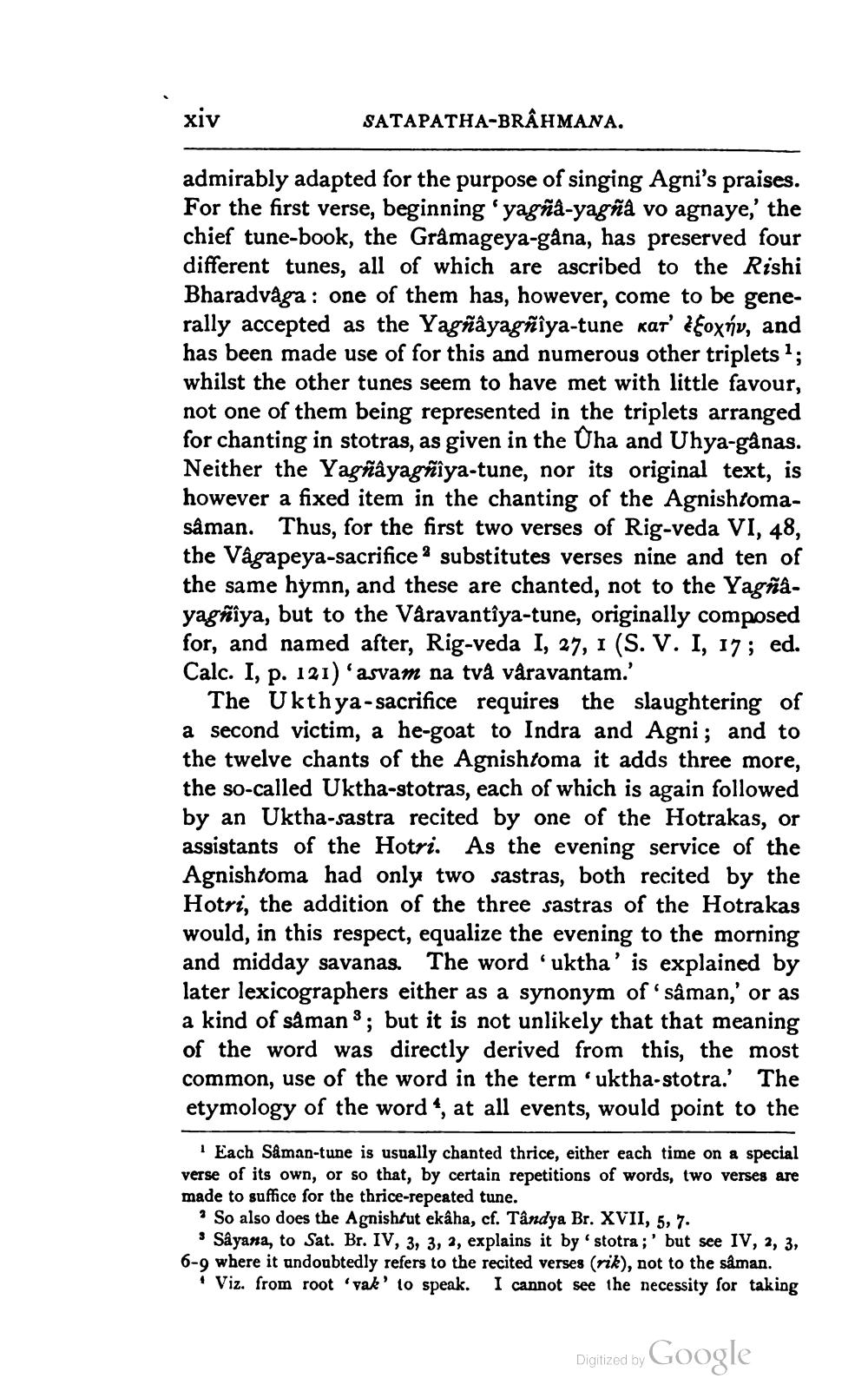________________
xiv
SATAPATHA-BRAHMANA.
admirably adapted for the purpose of singing Agni's praises. For the first verse, beginning 'yagña-yagña vo agnaye,' the chief tune-book, the Grâmageya-gana, has preserved four different tunes, all of which are ascribed to the Rishi Bharadvága: one of them has, however, come to be generally accepted as the Yagñayagñîya-tune kat' deoxnv, and has been made use of for this and numerous other triplets"; whilst the other tunes seem to have met with little favour, not one of them being represented in the triplets arranged for chanting in stotras, as given in the Uha and Uhya-gånas. Neither the Yagñayagñîya-tune, nor its original text, is however a fixed item in the chanting of the Agnishtomasaman. Thus, for the first two verses of Rig-veda VI, 48, the Vagapeya-sacrifice ? substitutes verses nine and ten of the same hymn, and these are chanted, not to the Yagñayagñîya, but to the Våravantîya-tune, originally composed for, and named after, Rig-veda I, 27, 1 (S. V. I, 17; ed. Calc. I, p. 121) asvam na två våravantam.
The Ukthya-sacrifice requires the slaughtering of a second victim, a he-goat to Indra and Agni; and to the twelve chants of the Agnishtoma it adds three more, the so-called Uktha-stotras, each of which is again followed by an Uktha-sastra recited by one of the Hotrakas, or assistants of the Hotri. As the evening service of the Agnishtoma had only two sastras, both recited by the Hotri, the addition of the three sastras of the Hotrakas would, in this respect, equalize the evening to the morning and midday savanas. The word 'uktha' is explained by later lexicographers either as a synonym of sâman,' or as a kind of saman"; but it is not unlikely that that meaning of the word was directly derived from this, the most common, use of the word in the term 'uktha-stotra. The etymology of the word “, at all events, would point to the
Each Saman-tune is usually chanted thrice, either each time on a special verse of its own, or so that, by certain repetitions of words, two verses are made to suffice for the thrice-repeated tune. . So also does the Agnishtut ekâha, cf. Tandya Br. XVII, 5, 7.
Sâyana, to Sat. Br. IV, 3, 3, 2, explains it by stotra ;' but see IV, 2, 3, 6-9 where it andoubtedly refers to the recited verses (rik), not to the saman.
• Viz. from root vak' to speak. I cannot see the necessity for taking
Digitized by Google




